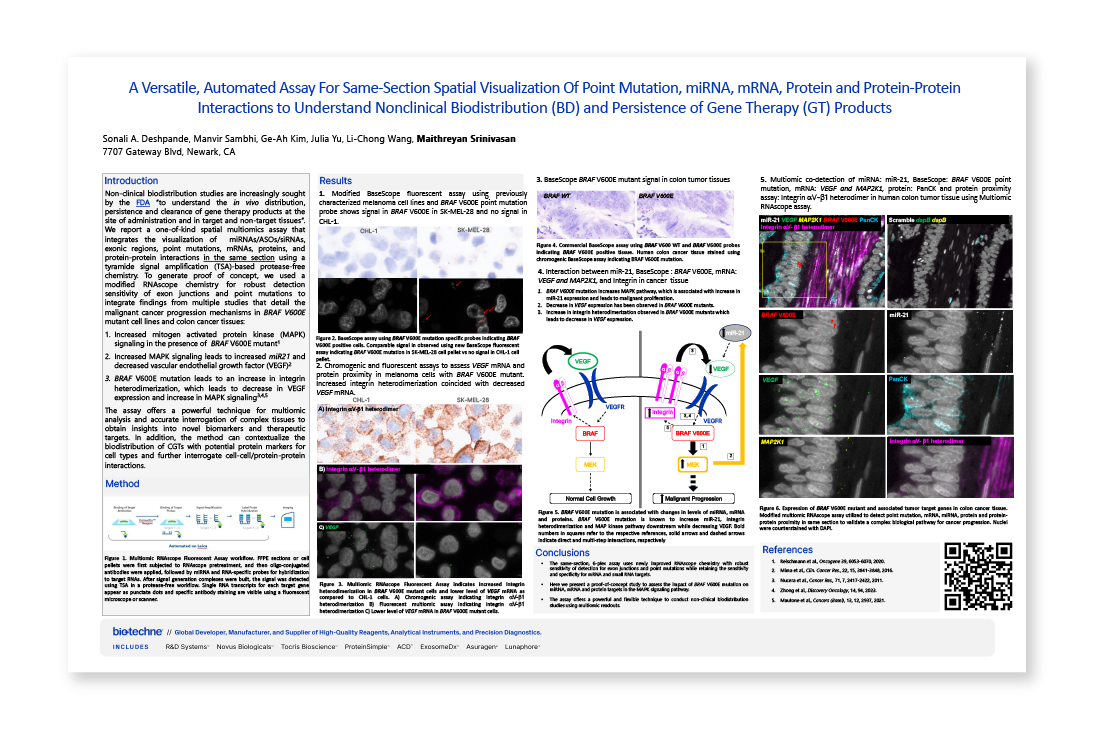A Versatile, Automated Assay For Same-Section Spatial Visualization Of Point Mutation, miRNA, mRNA, Protein and Protein-Protein Interactions to Understand Nonclinical Biodistribution (BD) and Persistence of Gene Therapy (GT) Products
Scientific Meeting PostersNon-clinical biodistribution studies are increasingly sought by the FDA “to understand the in vivo distribution, persistence and clearance of gene therapy products at the site of administration and in target and non-target tissues”. We report a one-of-kind spatial multiomics assay that integrates the visualization of miRNAs/ASOs/siRNAs, exonic regions, point mutations, mRNAs, proteins, and protein-protein interactions in the same section using a tyramide signal amplification (TSA)-based protease-free chemistry. To generate proof of concept, we used a modified RNAscope™ chemistry for robust detection sensitivity of exon junctions and point mutations to integrate findings from multiple studies that detail the malignant cancer progression mechanisms in BRAF V600E mutant cell lines and colon cancer tissues:
- Increased mitogen activated protein kinase (MAPK) signaling in the presence of BRAF V600E mutant1
- Increased MAPK signaling leads to increased miR21 and decreased vascular endothelial growth factor (VEGF)2
- BRAF V600E mutation leads to an increase in integrin heterodimerization, which leads to decrease in VEGF expression and increase in MAPK signaling3,4,5
The assay offers a powerful technique for multiomic analysis and accurate interrogation of complex tissues to obtain insights into novel biomarkers and therapeutic targets. In addition, the method can contextualize the biodistribution of CGTs with potential protein markers for cell types and further interrogate cell-cell/protein-protein interactions.
